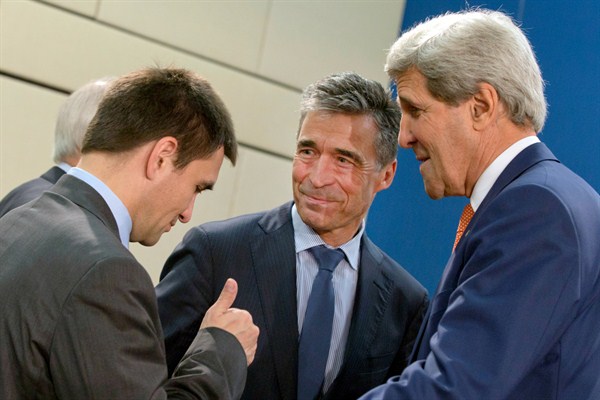A recently released paper of the Defense Committee of the U.K. House of Commons on Russia’s seizure of Crimea and the implications for Western security concludes that “events in Crimea and Ukraine represent a ‘game changer’ [that] will have significant implications for resources, force structures, equipment and training.” In addition to their excellent analysis of Russian strategy and tactics, the authors offered useful recommendations meant to inform both the next U.K. Defense and Security Review and the upcoming NATO summit. The alliance will need to adapt its capabilities and approach to collective defense if it is to avoid being caught off-guard by Russian tactics in the future.
The report reviews the recovery of Russia’s military power over the past decade, but focuses on how the Russians have been increasingly employing more-effective “next-generation warfare” tactics, beginning with the cyber attack on Estonia in 2007 but seen most clearly in the Georgia War of 2008 and the recent events in Ukraine. These tactics are also referred to as “ambiguous,” “asymmetric,” “unconventional” and “nonlinear,” among other terms, with the essential condition being avoiding conventional force-on-force fighting with superior NATO forces.
These tactics are neither new nor exclusive to Russia. In 1939, German soldiers dressed in Polish uniforms and “shot” at German forces to provide Germany with an excuse to invade Poland. Before invading another country, the Soviet Union under Josef Stalin would regularly establish a communist “government” that would invite Soviet troops into the country and legitimize the invasion. The Chinese today are bending and misapplying international law to expand their control of disputed maritime territories in the South China Sea.

